News Beat
News Beat reporting is an idrw.org initiative to let our Readers to report News Based on Actual facts but some how has not been reported in Main Stream Media .
SOURCE: RAUNAK KUNDE / NEWS BEAT / IDRW.ORG
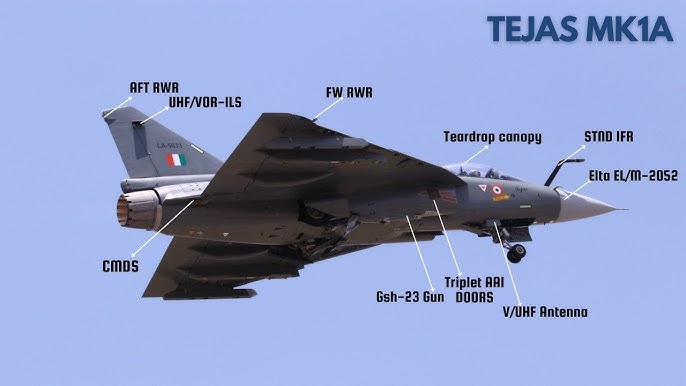
The Indian Air Force (IAF) is set to place an order for a second batch of 97 Tejas Mk1A Light Combat Aircraft (LCA) next year, with production slated to begin in early 2028 and targeted for completion by 2032. According to sources cited by idrw.org, this batch will incorporate further improvements aimed at boosting the indigenous content of the aircraft while addressing initial feedback from the first batch deliveries expected later this year. These enhancements, including new software upgrades and the integration of locally developed weapons systems, are poised to elevate the combat capabilities of the Tejas Mk1A, reinforcing its role as a cornerstone of India’s indigenous defense ecosystem.
A key focus of the second batch is to increase the indigenous content of the Tejas Mk1A, which currently stands at around 60%. Hindustan Aeronautics Limited (HAL), in collaboration with the Aeronautical Development Agency (ADA) and private sector partners, plans to replace several imported Line Replaceable Units (LRUs) with domestically developed alternatives. While specific LRUs targeted for indigenization have not been disclosed, components such as avionics, sensors, and electronic systems are likely candidates, given ongoing efforts under the Aatmanirbhar Bharat initiative to reduce reliance on foreign suppliers.
Continue readingSOURCE: RAUNAK KUNDE / NEWS BEAT / IDRW.ORG

Delhi-based aerospace startup DG Propulsion Private Limited (DPPL) is poised to make a significant mark in India’s defense and aerospace sector as its DG J40 turbojet engine approaches the flight trial stage. Prateek Dhawan, Director of DG Propulsion, announced that the DG J40, a compact and powerful engine designed for unmanned aerial vehicles (UAVs) and defense applications, is nearing a critical milestone in its development, underscoring India’s growing prowess in indigenous aerospace technology.
The DG J40, boasting a thrust capacity of up to 40 kgf (kilogram-force), is a cornerstone of DG Propulsion’s jet engine lineup. Engineered for high performance, the engine offers an optimal balance of power, fuel efficiency, and reliability, making it an ideal choice for high-speed UAVs, loitering munitions, and other defense platforms. Its compact design, high thrust-to-weight ratio, and customizable features—such as adjustable nozzles and water-landing capabilities—position it as a versatile solution for both military and civilian applications.
Continue readingSOURCE: RAUNAK KUNDE / NEWS BEAT / IDRW.ORG

The Indian Air Force (IAF) has been exploring a Russian proposal to lease 6-8 newly built Tupolev Tu-160M “White Swan” strategic bombers, as reported by veteran defense journalist Sandeep Unnithan. The offer, tied to Russia’s reactivation of the Tu-160M production line at the Kazan Aviation Plant, aimed to bolster India’s strategic capabilities with a potential IAF strategic air command. However, ongoing negotiations have hit significant hurdles, casting doubt on the deal’s progress.
The Indian Air Force (IAF) has been exploring a Russian proposal to lease 6-8 newly built Tupolev Tu-160M “White Swan” strategic bombers, as reported by veteran defense journalist Sandeep Unnithan. The offer, tied to Russia’s reactivation of the Tu-160M production line at the Kazan Aviation Plant, aimed to bolster India’s strategic capabilities with a potential IAF strategic air command. However, ongoing negotiations have hit significant hurdles, casting doubt on the deal’s progress.
Continue readingSOURCE: RAUNAK KUNDE / NEWS BEAT / IDRW.ORG

In a significant push toward self-reliance in defence technology, the Indian Army and Indian Air Force (IAF) have thrown their weight behind the development of High-Altitude Long-Endurance (HALE) Unmanned Aerial Vehicles (UAVs), with two distinct proposals—one turboprop-powered and the other turbojet-powered—gaining momentum.
According to sources cited by idrw.org, the Aeronautical Development Establishment (ADE) and Hindustan Aeronautics Limited (HAL) are spearheading these parallel efforts, each tailored to meet the unique operational demands of India’s armed forces, particularly in the challenging Himalayan region. Both programs are on the cusp of receiving official approval from the Ministry of Defence (MoD), signalling a strategic shift toward Indigenous UAV capabilities.
Continue readingSOURCE: RAUNAK KUNDE / NEWS BEAT / IDRW.ORG
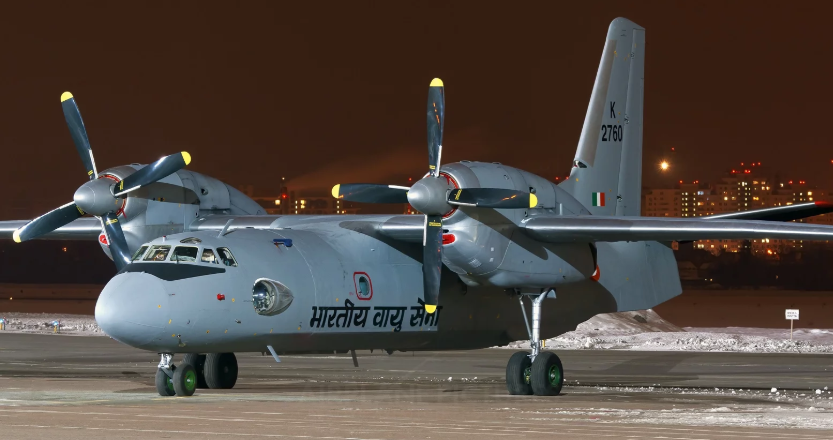
The Indian Air Force (IAF) is extending the operational life of its Antonov An-32 tactical transport aircraft, a Soviet-origin workhorse, through a comprehensive overhaul program involving local airframe refurbishment and component upgrades. According to sources cited by idrw.org, at least 60 of the newer An-32 units will undergo extensive life-extension maintenance to keep them flying beyond their original 25-year service life, potentially until 2040.
By partnering with private sector companies in India, the IAF aims to leverage domestic expertise to modernize the fleet, ensuring continued reliability for critical missions in the northern and northeastern sectors. This initiative, announced in June 2025, aligns with India’s ‘Aatmanirbhar Bharat’ push for self-reliance in defense maintenance and underscores the An-32’s indispensable role in tactical airlift, disaster management, and high-altitude operations.
Continue readingSOURCE: RAUNAK KUNDE / NEWS BEAT / IDRW.ORG

According to sources cited by idrw.org, captive trials of the indigenous Astra MkI Beyond Visual Range Air-to-Air Missile (BVRAAM) on the Rafale fighter jet are slated to commence later this year, with live firing trials expected to follow in 2026. The integration effort, led by French aerospace giant Dassault Aviation in collaboration with India’s Defence Research and Development Organisation (DRDO), marks a significant step toward enhancing the Indian Air Force’s (IAF) air combat capabilities.
Dassault has been tasked with integrating the Astra MkI, which boasts a range of approximately 110 km, onto the Rafale fleet. The partnership will also pave the way for the integration of the more advanced Astra MkII, with a range of 160 km, further strengthening the IAF’s aerial superiority. Currently, the Rafale is equipped with the MICA BVRAAM, which has a range of around 80 km—a capability considered inferior to both Astra variants in terms of reach and engagement flexibility.
Continue readingSOURCE: RAUNAK KUNDE / NEWS BEAT / IDRW.ORG
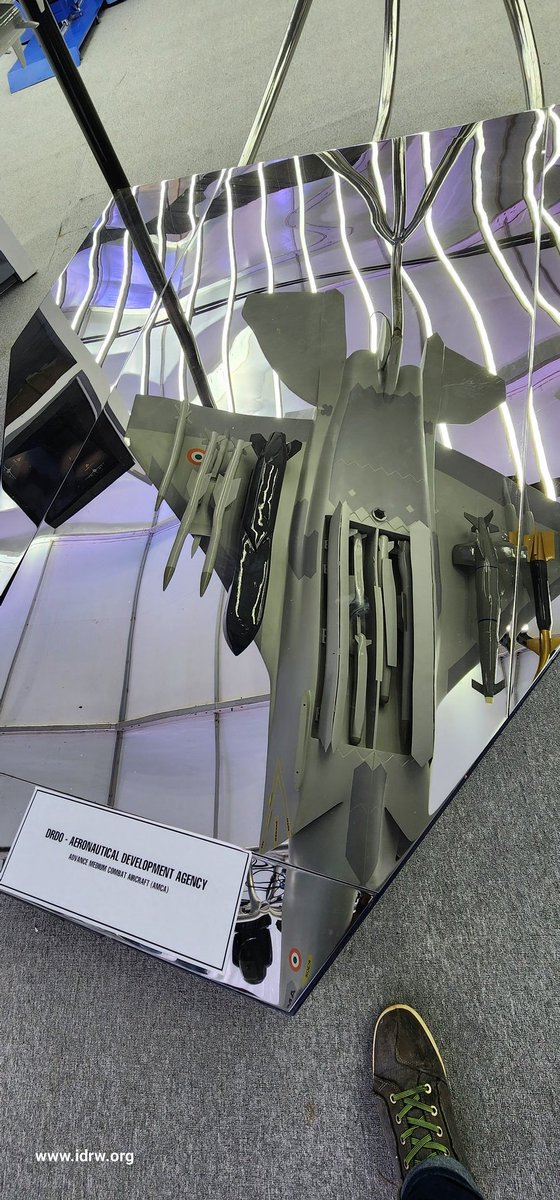
The Aeronautical Development Agency (ADA), spearheading India’s Advanced Medium Combat Aircraft (AMCA) program, has revealed ongoing efforts to maximize the utilization of the aircraft’s internal weapons bay (IWB) to bolster its air-to-air combat capabilities in stealth mode. The fifth-generation fighter, designed for air superiority and multi-role operations, is undergoing significant design optimization to carry a greater number of air-to-air missiles internally, enhancing its lethality while maintaining a low radar cross-section.
In earlier statements, ADA confirmed that the AMCA could carry at least four Astra Mk1 air-to-air missiles internally. However, recent advancements in internal bay configuration and design refinements have paved the way for a substantial increase in missile capacity.
Continue readingSOURCE: RAUNAK KUNDE / NEWS BEAT / IDRW.ORG
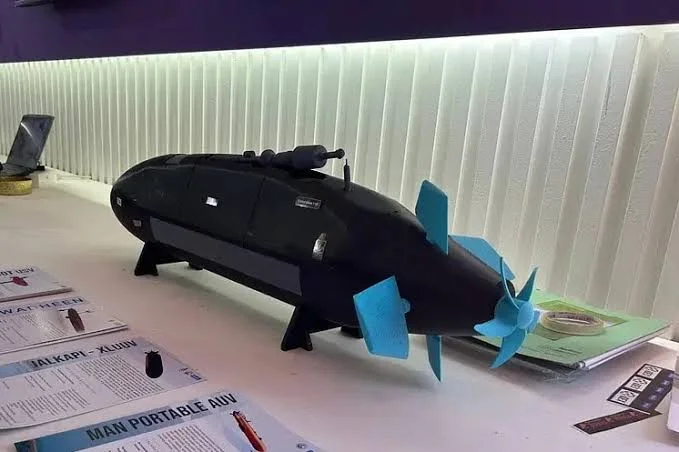
On June 10, 2025, Krishna Defence and Allied Industries Ltd (KDAIL) marked a historic milestone with a ceremonial plate-cutting event at its Halol facility in Gujarat, signaling the start of construction for India’s largest and most advanced Autonomous Underwater Vehicle (AUV), the Jalkapi Extra-Large Unmanned Underwater Vehicle (XLUUV). This ambitious project, spearheaded by the Indian Navy, represents a significant leap toward self-reliance in cutting-edge defense technology.
The Jalkapi, designed by the Indian Navy’s Directorate of Naval Design – Submarine Design Group (DND-SDG), is a collaborative effort involving KDAIL, Rekise Marine, and Steel Authority of India Limited (SAIL). The project underscores India’s growing expertise in autonomous underwater systems and its commitment to bolstering maritime defense capabilities.
Continue readingSOURCE: RAUNAK KUNDE / NEWS BEAT / IDRW.ORG
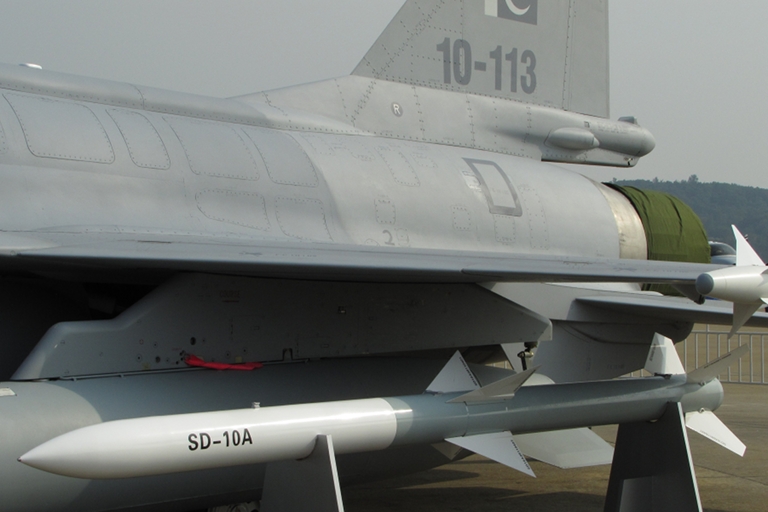
In a revealing account of the recent India-Pakistan conflict, sources familiar with the matter have disclosed to the Indian Defence Research Wing (idrw.org) that the Pakistan Air Force (PAF) attempted to intercept India’s air-launched BrahMos supersonic cruise missile using its PL-12 active radar-guided beyond-visual-range air-to-air missile (AAM).
The effort, executed by PAF’s JF-17 Thunder jets, proved unsuccessful due to the BrahMos-A’s exceptional speed and advanced design, which rendered it nearly impossible to track or target. This incident underscores the technological superiority of India’s BrahMos missile and exposes limitations in Pakistan’s air defense capabilities.
Continue readingSOURCE: RAUNAK KUNDE / NEWS BEAT / IDRW.ORG

India’s ambitious Advanced Medium Combat Aircraft (AMCA) program, a fifth-generation stealth fighter jet initiative, has sparked a fierce competition among several states to host its production facility. Bangalore, Nashik, Coimbatore, Lucknow, and Hyderabad are actively bidding to offer land and incentives to the consortium of companies forming to lead the AMCA program.
According to sources cited by idrw.org, the establishment of the AMCA production line is expected to generate significant local employment, drive revenue through GST collections, and attract aerospace suppliers, creating a robust economic ecosystem that could remain active for three to four decades. As the Aeronautical Development Agency (ADA) begins identifying partners for the program, states are aggressively pitching their cases to secure this prestigious project.
Continue readingSOURCE: RAUNAK KUNDE / NEWS BEAT / IDRW.ORG

The Defence Research and Development Organisation (DRDO) of India has embarked on an ambitious project to enhance its Heavy Weight Torpedo (HWT) capabilities, a critical asset for the Indian Navy’s underwater warfare strategy. This initiative, aimed at revolutionizing torpedo propulsion, integrates cutting-edge nanomaterials, sophisticated design methodologies, and a high-performance 300 kW Brushless DC (BLDC) motor to deliver torpedoes that are more powerful, efficient, reliable, and stealthy. The project underscores India’s push for self-reliance in defense technology and its commitment to strengthening naval capabilities amid rising geopolitical tensions in the Indo-Pacific region.
At the heart of DRDO’s HWT upgrade is a novel 300 kW BLDC motor, designed with a unique configuration comprising three stacks in a rotor-stator-rotor arrangement. Each stack generates 50 kW, contributing to a total output of 150 kW, with two contra-rotating motors delivering an additional 150 kW. This contra-rotating design enhances propulsion efficiency by reducing cavitation—a phenomenon that generates noise and compromises stealth—while improving thrust and maneuverability. The BLDC motor’s high power-to-weight ratio and precise control make it ideal for underwater applications, where reliability and energy efficiency are paramount.
Continue readingSOURCE: RAUNAK KUNDE / NEWS BEAT / IDRW.ORG

Sudhir Mishra, former CEO of BrahMos Aerospace, has confirmed that the Indian Army is keen on adopting the BrahMos-NG (Next Generation) missile, a lighter and advanced variant primarily being developed for the Indian Air Force (IAF). The BrahMos-NG, weighing just 1.3 tons, is designed to be a compact yet powerful addition to India’s missile arsenal, with adaptations that could significantly enhance the Army’s operational capabilities.
Unlike its heavier predecessor, the BrahMos-NG is expected to incorporate a booster stage for the Army variant, enabling compatibility with ground-based launch systems. This lighter missile, with a weight reduction of nearly half compared to the original BrahMos, allows for a substantial increase in payload capacity per Transporter Erector Launcher (TEL). While the current BrahMos TEL carries three missiles, the BrahMos-NG could enable configurations with six or even nine missiles per launcher. This upgrade would significantly enhance the Army’s ability to conduct salvo strikes, delivering a higher volume of precision strikes against targets in rapid succession.
Continue readingSOURCE: RAUNAK KUNDE / NEWS BEAT / IDRW.ORG
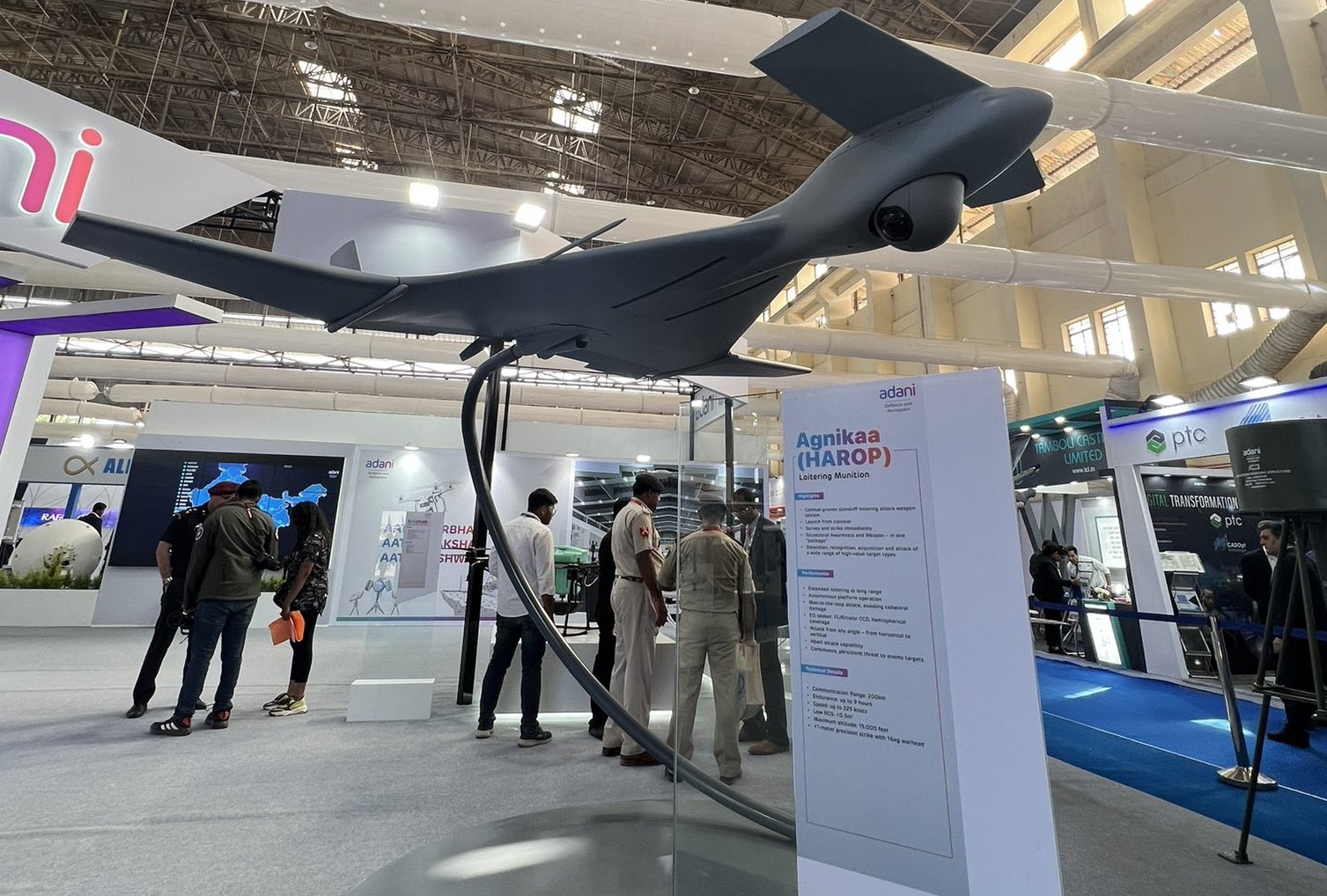
Following the Indian Air Force’s (IAF) successful deployment of the Israeli-supplied Harop loitering munition during Operation Sindoor in May 2025, the IAF is intensifying its focus on acquiring additional units of the Adani-manufactured Agnikaa AR, an autonomous anti-radiation weapon system and a licensed variant of the Harop.
The Agnikaa AR, produced by Adani Defence & Aerospace in collaboration with Israel Aerospace Industries (IAI), proved its mettle by neutralizing a Chinese-supplied air defense system in the recent India-Pakistan conflict, showcasing its precision and effectiveness in Suppression of Enemy Air Defenses (SEAD) missions. According to sources cited by the Indian Defence Research Wing (idrw.org), the IAF is keen to bolster its inventory with more Agnikaa AR systems to counter radar-based air defenses, aligning with India’s push for self-reliance in defense manufacturing.
Continue readingSOURCE: RAUNAK KUNDE / NEWS BEAT / IDRW.ORG

A leading Indian defense Private electronics company, is set to deliver the first batch of its indigenously developed Uttam Active Electronically Scanned Array (AESA) radar for the Tejas Mk1A program starting next year, 2026. This marks a significant milestone in India’s push for self-reliance in defense technology under the Atmanirbhar Bharat initiative.
The initial batch will consist of approximately 33 Uttam AESA radars, which will be integrated into the Tejas Mk1A Light Combat Aircraft (LCA) starting from the 41st jet. The first 40 Tejas Mk1A jets will be equipped with the ELM-2052 Fire Control Radar (FCR) supplied by ELTA Systems of Israel, as part of the transitional arrangement before the indigenous Uttam radar takes over.
Continue readingSOURCE: RAUNAK KUNDE / NEWS BEAT / IDRW.ORG

India’s Defence Research and Development Organisation (DRDO), through its Armament Research and Development Establishment (ARDE), is advancing an ambitious project to develop a solar-powered stratospheric airship for the Indian Air Force (IAF).
This lighter-than-air platform, designed to operate at altitudes between 17 and 22 kilometers in the stratosphere, promises to revolutionize India’s Intelligence, Surveillance, and Reconnaissance (ISR) capabilities. According to sources close to Indian Defence Research Wing (idrw.org), which first confirmed this development and the IAF’s keen interest in the program, the airship will leverage solar panels to generate its own power, enabling it to remain airborne for weeks or even months at a time. This cutting-edge initiative positions India among a select group of nations with indigenous high-altitude surveillance platforms, enhancing its strategic posture amid rising regional tensions.
Continue reading